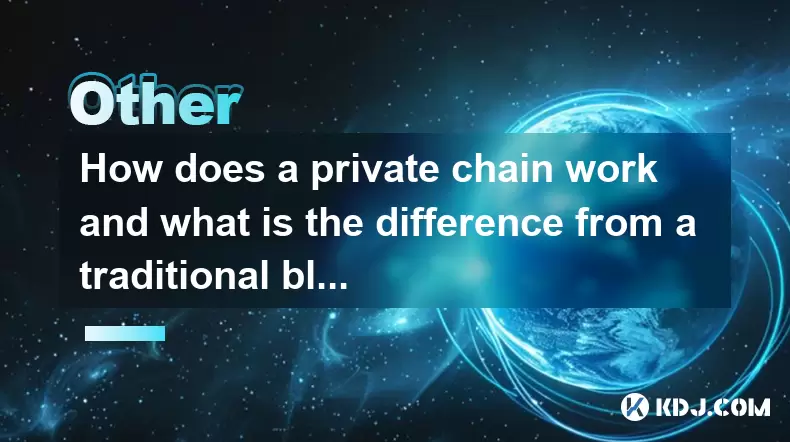-
 Bitcoin
Bitcoin $118400
0.47% -
 Ethereum
Ethereum $3836
2.20% -
 XRP
XRP $3.157
2.98% -
 Tether USDt
Tether USDt $0.9999
-0.03% -
 BNB
BNB $801.5
1.31% -
 Solana
Solana $180.9
2.07% -
 USDC
USDC $0.9999
-0.02% -
 Dogecoin
Dogecoin $0.2225
2.50% -
 TRON
TRON $0.3285
-1.02% -
 Cardano
Cardano $0.7789
2.60% -
 Hyperliquid
Hyperliquid $43.60
2.39% -
 Sui
Sui $3.892
4.41% -
 Stellar
Stellar $0.4229
3.34% -
 Chainlink
Chainlink $18.01
3.98% -
 Hedera
Hedera $0.2745
6.77% -
 Bitcoin Cash
Bitcoin Cash $582.3
3.38% -
 Avalanche
Avalanche $23.77
1.04% -
 Ethena USDe
Ethena USDe $1.001
0.01% -
 Toncoin
Toncoin $3.493
3.59% -
 Litecoin
Litecoin $110.0
2.48% -
 UNUS SED LEO
UNUS SED LEO $8.936
-0.37% -
 Shiba Inu
Shiba Inu $0.00001304
2.49% -
 Uniswap
Uniswap $9.999
1.09% -
 Polkadot
Polkadot $3.897
3.26% -
 Monero
Monero $308.6
-0.83% -
 Dai
Dai $0.9999
-0.01% -
 Bitget Token
Bitget Token $4.504
-0.04% -
 Pepe
Pepe $0.00001154
2.95% -
 Cronos
Cronos $0.1471
3.06% -
 Ethena
Ethena $0.6691
19.53%
How does a private chain work and what is the difference from a traditional blockchain?
Private chains offer enhanced control and privacy, making them ideal for enterprise applications where sensitive data and regulatory compliance are crucial.
May 16, 2025 at 10:29 am

A private chain, often referred to as a permissioned blockchain, operates under a different set of rules compared to traditional, public blockchains like Bitcoin or Ethereum. Understanding the mechanics of a private chain and its differences from a traditional blockchain is crucial for grasping the full spectrum of blockchain technology applications.
What is a Private Chain?
A private chain is a blockchain where the network access is restricted to a specific group of participants. Unlike public blockchains, where anyone can join the network and participate in the consensus process, a private chain requires permission to join and typically has a centralized authority or consortium that governs the network. The key advantage of a private chain is enhanced control and privacy, making it suitable for enterprise applications where sensitive data and compliance with regulations are critical.
How Does a Private Chain Work?
In a private chain, the process of adding new blocks to the blockchain is managed by a set of pre-approved nodes. These nodes are responsible for validating transactions and adding them to the blockchain. The consensus mechanism in a private chain is often simpler and more efficient than in public blockchains, as the trusted nodes can reach agreement more quickly.
- Node Selection: Only selected entities can operate nodes on the network. These entities are typically part of the organization or consortium that governs the private chain.
- Transaction Validation: Transactions are submitted to the network, where they are validated by the nodes according to predefined rules.
- Block Creation: Once validated, transactions are grouped into blocks, which are then added to the blockchain.
- Consensus: The consensus mechanism, such as Practical Byzantine Fault Tolerance (PBFT) or Raft, ensures that all nodes agree on the state of the blockchain.
Differences from Traditional Blockchain
The primary difference between a private chain and a traditional blockchain lies in their accessibility and governance. Traditional blockchains are open to the public, allowing anyone to join the network, participate in the consensus process, and view the entire transaction history. In contrast, private chains are restricted to a select group of participants, offering greater control over who can access the network and what data is visible.
Another significant difference is in the consensus mechanism. Public blockchains often use energy-intensive mechanisms like Proof of Work (PoW) or Proof of Stake (PoS), which are designed to secure the network against malicious actors. Private chains, on the other hand, can use more efficient consensus algorithms since the network is controlled by trusted entities, reducing the need for such robust security measures.
Use Cases of Private Chains
Private chains are particularly useful in scenarios where privacy and control are paramount. Financial institutions, for example, can use private chains to process transactions securely and comply with regulatory requirements. Similarly, supply chain management can benefit from private chains by tracking goods and ensuring data integrity among trusted partners.
- Banking and Finance: Private chains can facilitate secure and efficient interbank transactions, reducing costs and improving settlement times.
- Supply Chain: Companies can use private chains to track products from manufacturer to consumer, ensuring transparency and accountability within the supply chain.
- Healthcare: Private chains can securely store and share patient data among authorized healthcare providers, enhancing patient care while maintaining privacy.
Security and Privacy in Private Chains
Security and privacy are central to the design of private chains. Since access to the network is restricted, the risk of malicious attacks is significantly reduced. Additionally, private chains can implement advanced encryption and access control mechanisms to further protect sensitive data.
- Encryption: Data on the blockchain can be encrypted, ensuring that only authorized parties can access it.
- Access Control: Permissions can be set to control who can read, write, or validate transactions on the network.
- Audit Trails: Private chains can maintain detailed logs of all activities, providing transparency and accountability within the network.
Performance and Scalability
Private chains often outperform public blockchains in terms of transaction speed and scalability. With fewer nodes and a more streamlined consensus process, private chains can process transactions more quickly. This makes them ideal for applications that require high throughput and low latency.
- Transaction Speed: Private chains can process thousands of transactions per second, compared to the slower speeds of public blockchains.
- Scalability: The ability to add or remove nodes as needed allows private chains to scale more efficiently to meet the demands of growing networks.
Implementation of a Private Chain
Implementing a private chain involves several steps, from choosing the right platform to setting up the network and defining the governance model. Here is a detailed guide on how to set up a private chain using Hyperledger Fabric, a popular platform for enterprise blockchain solutions:
- Choose a Platform: Select a suitable platform like Hyperledger Fabric, which is designed for enterprise use cases.
- Set Up the Environment: Install the necessary software and tools, including Docker and the Hyperledger Fabric binaries.
- Define the Network: Determine the number of nodes and their roles within the network. Create the necessary configuration files to define the network topology.
- Create the Chaincode: Develop the smart contracts (chaincode) that will govern the business logic of the blockchain.
- Deploy the Network: Use the configuration files to deploy the network and start the nodes.
- Test and Validate: Run tests to ensure that the network is functioning as expected and that the chaincode is executing correctly.
- Governance and Maintenance: Establish a governance model to manage the network and perform regular maintenance to ensure its continued operation.
Frequently Asked Questions
Q: Can a private chain be converted to a public blockchain?
A: While it is technically possible to transition a private chain to a public blockchain, it involves significant changes to the network's architecture and governance model. Such a transition would require careful planning and consensus among all participants.
Q: How do private chains handle regulatory compliance?
A: Private chains can be designed to meet specific regulatory requirements by implementing features such as audit trails, data encryption, and access controls. This allows organizations to ensure compliance with laws and regulations while leveraging the benefits of blockchain technology.
Q: Are private chains more vulnerable to centralization risks?
A: Private chains do carry a higher risk of centralization since they are controlled by a limited number of entities. However, this can be mitigated by implementing robust governance models and ensuring that the network's rules are transparent and fair to all participants.
Q: Can private chains interact with public blockchains?
A: Yes, private chains can interact with public blockchains through interoperability solutions such as cross-chain bridges or atomic swaps. This allows for the seamless transfer of assets and data between different blockchain networks.
Disclaimer:info@kdj.com
The information provided is not trading advice. kdj.com does not assume any responsibility for any investments made based on the information provided in this article. Cryptocurrencies are highly volatile and it is highly recommended that you invest with caution after thorough research!
If you believe that the content used on this website infringes your copyright, please contact us immediately (info@kdj.com) and we will delete it promptly.
- Pudgy Penguins Price Prediction: Buying Opportunity or Insider Dump?
- 2025-07-31 18:50:35
- Penny Coin Power: Unearthing 20x Potential in Undervalued Crypto
- 2025-07-31 20:10:14
- Shrapnel, GalaChain, and China Gaming: A New Frontier
- 2025-07-31 19:10:35
- Mutuum Finance, Bitcoin, and Market Analysis: Decoding the Latest Trends
- 2025-07-31 19:30:13
- Dogecoin Howl: Bullish Signals and Analyst Bites – Is the Meme Coin Ready to Pounce?
- 2025-07-31 18:30:16
- Decoding Crypto Presales, Ethereum's Role, and Navigating a Tricky Altcoin Season
- 2025-07-31 18:30:16
Related knowledge

How to start a business using blockchain?
Jul 28,2025 at 12:36am
Understanding the Basics of Blockchain TechnologyBefore diving into the process of starting a business using blockchain, it's crucial to understand wh...

What is a token on the blockchain?
Jul 21,2025 at 07:00am
Understanding the Concept of a TokenIn the realm of blockchain technology, a token is a digital representation of an asset or utility that exists on a...

Can blockchain be used for identity verification?
Jul 18,2025 at 02:14pm
Understanding Identity Verification in the Digital AgeIn the modern digital landscape, identity verification has become a critical component for ensur...

What is a consensus mechanism in blockchain?
Jul 21,2025 at 03:01am
Understanding the Basics of Consensus MechanismsA consensus mechanism is a critical component of any blockchain network. It refers to the process by w...

How to explain blockchain to someone with no tech background?
Jul 18,2025 at 11:08pm
Understanding the Basics of BlockchainTo explain blockchain to someone with no tech background, it's essential to start with simple analogies and avoi...

Who invented blockchain technology?
Jul 23,2025 at 01:28am
Origins of Blockchain TechnologyBlockchain technology did not emerge from a single inventor or institution. Instead, it evolved through a series of ac...

How to start a business using blockchain?
Jul 28,2025 at 12:36am
Understanding the Basics of Blockchain TechnologyBefore diving into the process of starting a business using blockchain, it's crucial to understand wh...

What is a token on the blockchain?
Jul 21,2025 at 07:00am
Understanding the Concept of a TokenIn the realm of blockchain technology, a token is a digital representation of an asset or utility that exists on a...

Can blockchain be used for identity verification?
Jul 18,2025 at 02:14pm
Understanding Identity Verification in the Digital AgeIn the modern digital landscape, identity verification has become a critical component for ensur...

What is a consensus mechanism in blockchain?
Jul 21,2025 at 03:01am
Understanding the Basics of Consensus MechanismsA consensus mechanism is a critical component of any blockchain network. It refers to the process by w...

How to explain blockchain to someone with no tech background?
Jul 18,2025 at 11:08pm
Understanding the Basics of BlockchainTo explain blockchain to someone with no tech background, it's essential to start with simple analogies and avoi...

Who invented blockchain technology?
Jul 23,2025 at 01:28am
Origins of Blockchain TechnologyBlockchain technology did not emerge from a single inventor or institution. Instead, it evolved through a series of ac...
See all articles

























































































